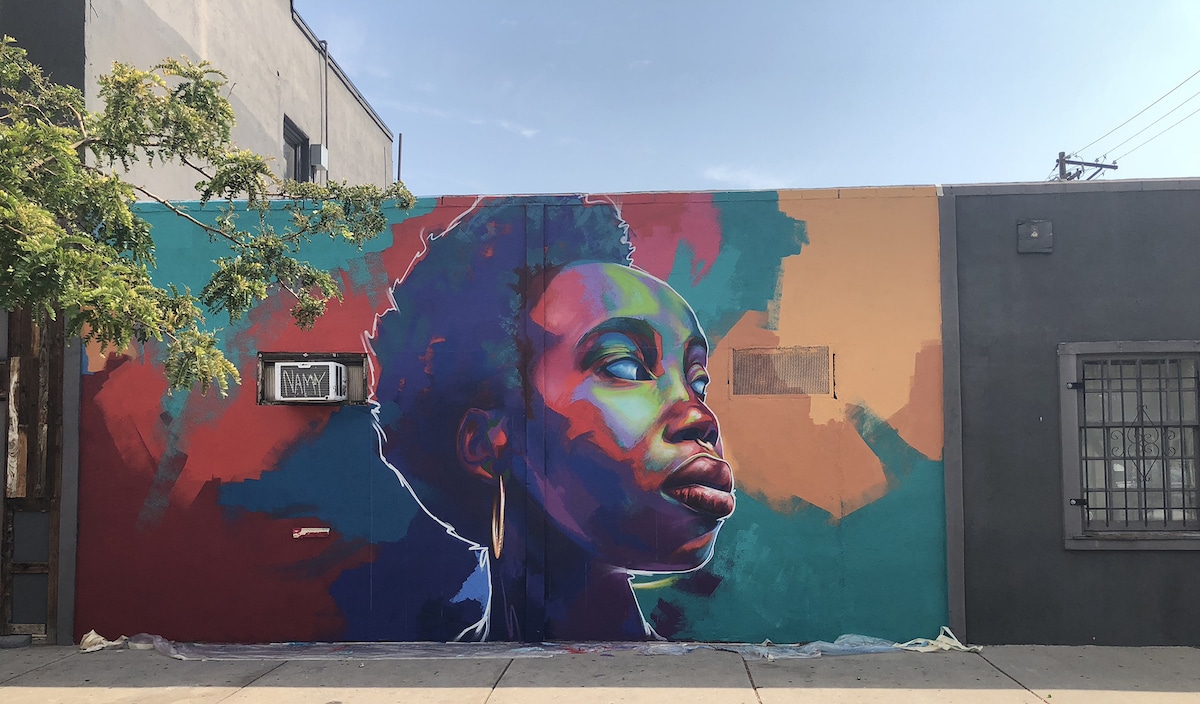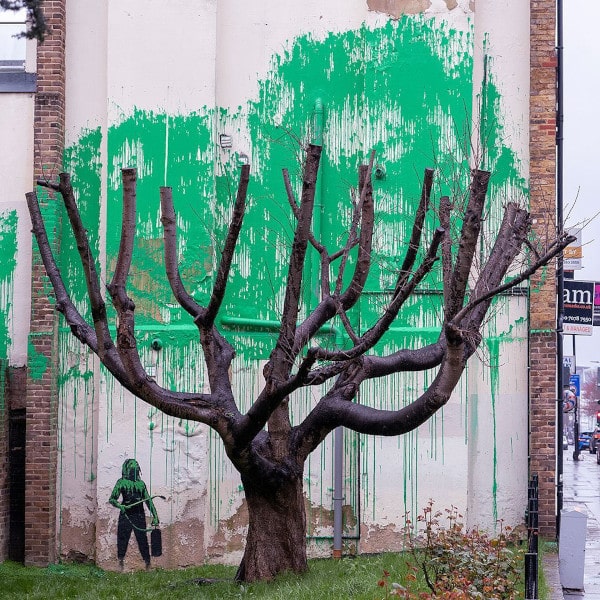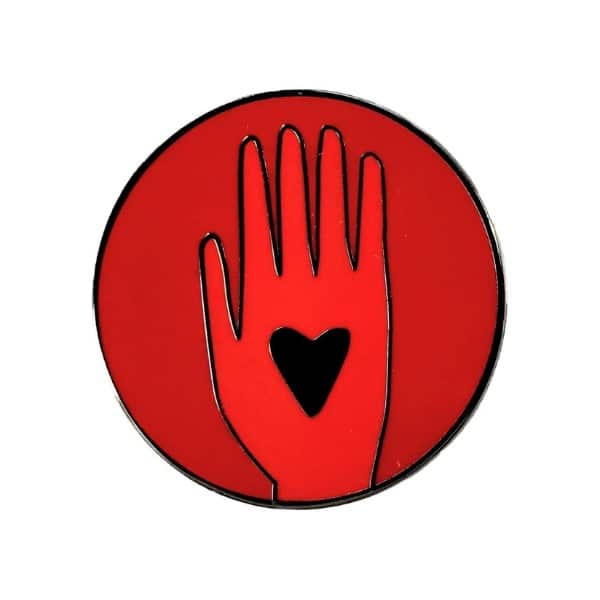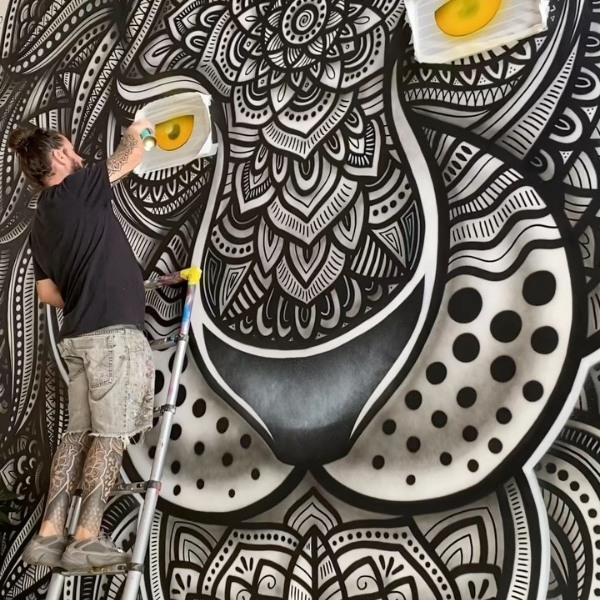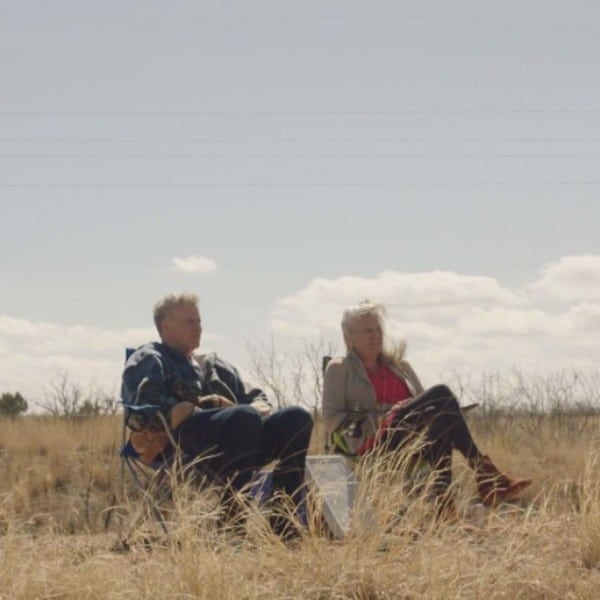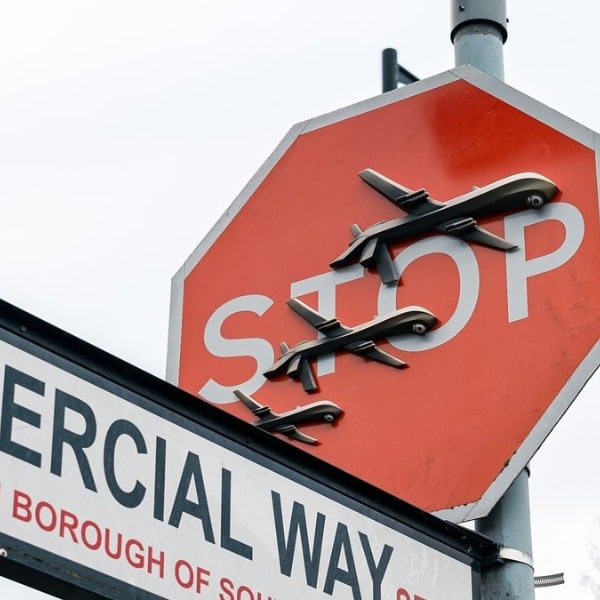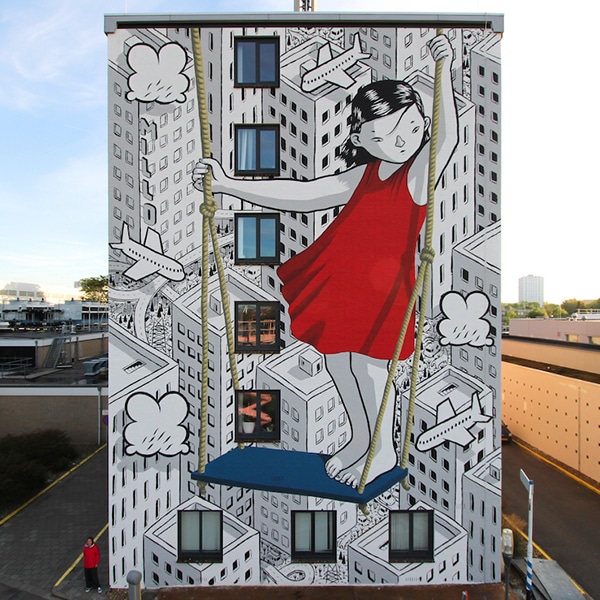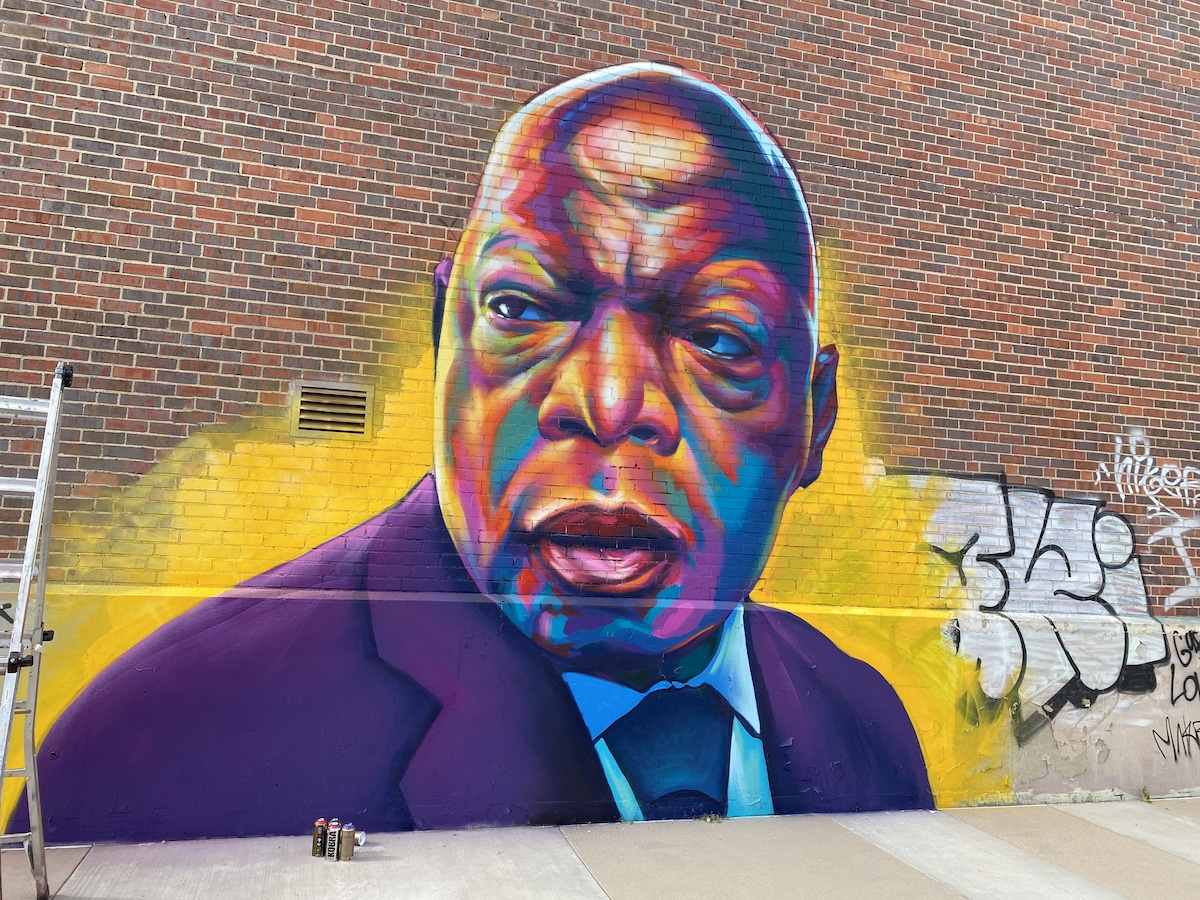
Denver-based artist Thomas “Detour” Evans doesn't limit himself to one medium. Working on canvas, creating installations, and executing large-scale murals are all just part of his repertoire. As of late, he's been making a name for himself with his colorful public art which celebrates both everyday people from the community as well as famous figures.
Over the past few months, he's been creating street art with a goal of helping educate his community and memorialize someone who has been lost. His newest mural captures the spirit of recently deceased politician and civil rights leader John Lewis, as Evans expertly animates the wisdom behind his eyes.
For Evans, it's important that artists take an active role in both telling and preserving history. As an adept storyteller, he's taken it upon himself to ensure that what's on the walls reflects what's happening on the ground.
We had the opportunity to speak with the talented artist about his segue into public art, as well as the impetus for him to begin painting pieces under the hashtag #spraytheirname. Read on for My Modern Met’s exclusive interview.
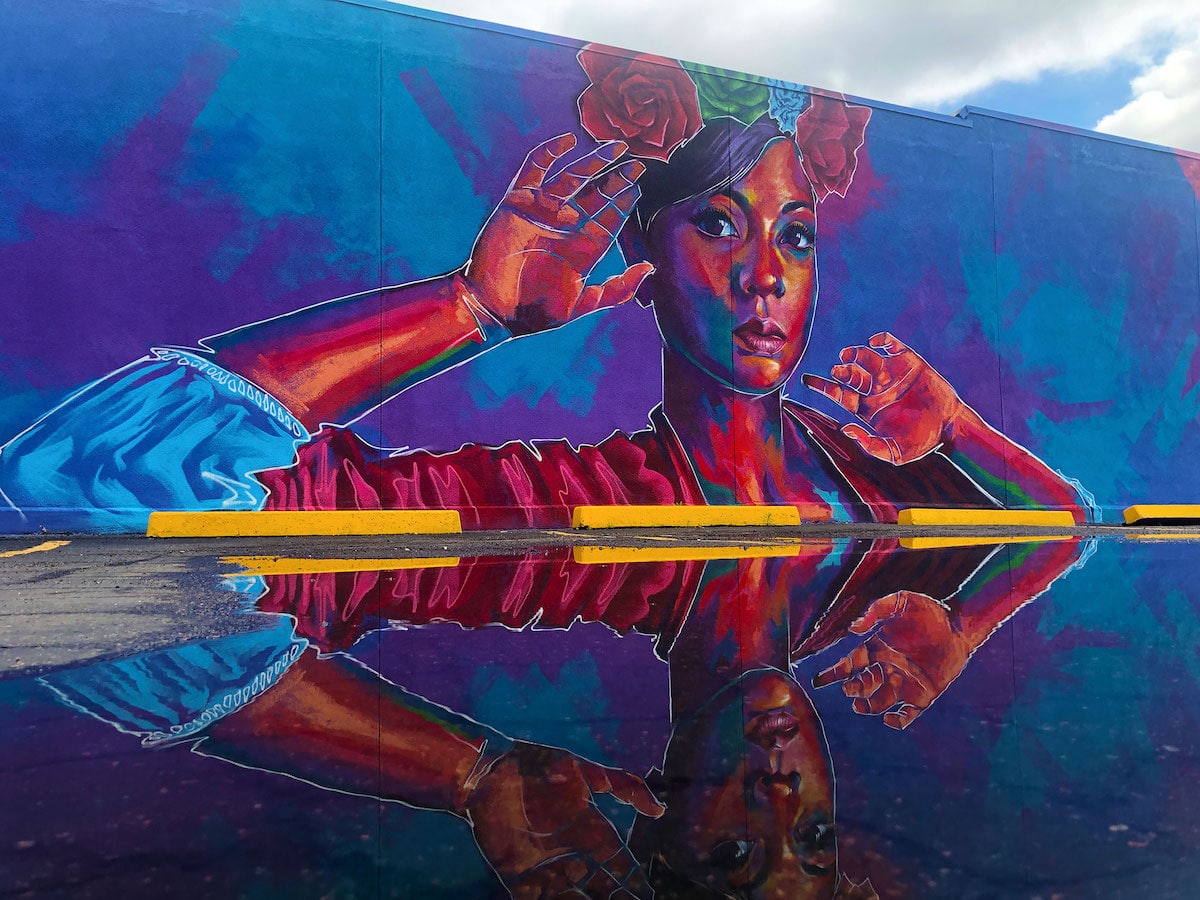
What first sparked your love of art?
My dad was a military officer, so he moved around a lot. I would use art as a way to make friends wherever I had to move because we moved every three to five years. And because we moved a lot, it was a great way of making friends with everyone. So I would draw my friends and my teachers and just never really stopped.
It sort of transformed into doing bigger works, getting into airbrushing, and doing the airbrushed t-shirts for people. I loved art because I just loved the way it made people feel. So I just kept doing that, and that's why I do more figurative stuff.
When did you start getting into public art?
I really started doing a lot of murals in about 2015. It was a mural festival called CRUSH Walls in Denver. And the people organizing it that year invited me to do a wall because I was doing big works on canvas. They saw me getting bigger with the canvas work and they invited me to do a wall.
I had a lot of friends that did graffiti and murals, so I reached out to them to help me out in terms of how do I do this technique or scale up my work. My friend Tins (his artist name is Tins) basically showed me how to do a ton of stuff. It took me about a week to do a small garage door and an alley. And from there I loved the way that it came out and people loved it. I was working on just trying to figure out how do I translate this colorful work that I do on a larger scale. People really saw what was different and that really stuck with me and sparked even more interest in getting better at street art.
Your art spreads far beyond your public pieces. In 2016, you worked on a project that asked members of Denver's African American community to take a DNA test and then pose with pieces of African art corresponding to their heritage. What did you learn or what most surprised you about that particular project?
This project was called They Still Live. This was right after I moved back from Tanzania to Denver. And it was basically because when I was in Tanzania, I looked like everyone. People thought I was Tanzanian and that got me interested in my heritage. So I did a DNA test when I came back here. Not only that, I ran into this individual, Paul Hamilton, who had a large collection of African art that just sat in his house. Basically I said, we need to do something with this.
So I created a project where I would pair these pieces with people in the community and then have them come to the house and pick up whatever they want. Then we did a photoshoot and got them DNA tested to figure out where they're from and to see if things matched up. And, interestingly, with everyone, it pretty much matched up because a lot of it was from West Africa, which is where a lot of the slave trade was.
It was a great experience in terms of seeing how people of African descent had so many different pieces of Africa in them and the vast diversity within those areas. For me, it was an opportunity just to see deeper into the backgrounds of the people I was hanging out with because a lot of times you only know them on the surface level. This gave me the opportunity of learning more about their heritage and more about how did they end up in Colorado and what their family was like and what they knew about their own family. It was a wonderful opportunity to do that and open up a sort of dialogue within their own family and community.
And a lot of them were appreciative of the opportunity to learn more about where they came from, so this wasn't a project that just stopped at the end of the exhibition. A lot of them were prompted to dig a little bit deeper and do more projects based on the project that was They Still Live. It was exciting just to have a project spark a lot of conversation because everyone has a history or a past so it always sparks conversation, no matter what, and everyone has a different perspective.
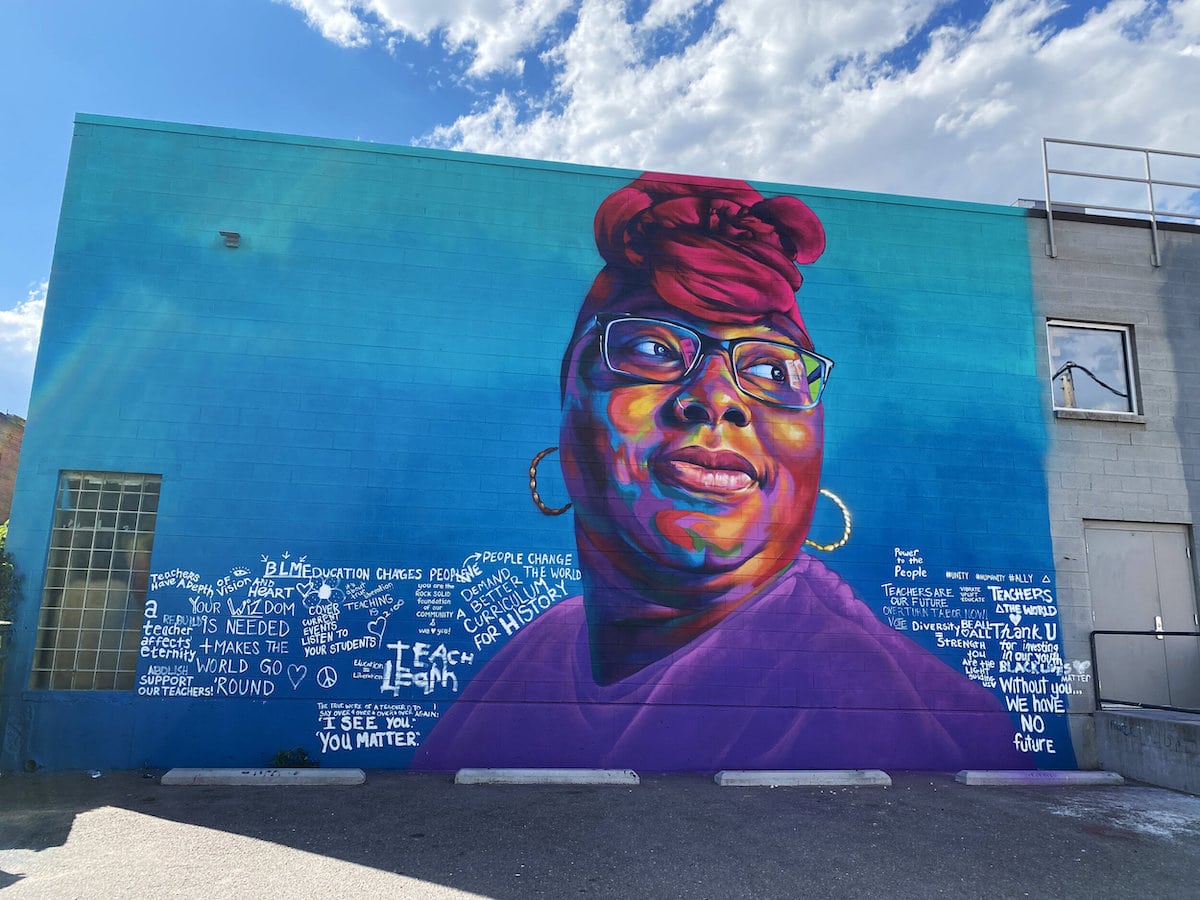
Lately, you've been doing a lot of murals to spark positive change in the community. Why do you think it's important for artists to involve themselves in social causes?
For me, I always tell artists that we're basically historians. You can really tell what society was a thousand years ago based on the art that was created and the materials used and the subject matter. We have to do that today. When you're doing work that's about society, you're going to be sort of layering it with all these different social issues. So it's really important for artists to get involved, not only because of that but also because of the fact that we're storytellers.
You have to be responsible for telling your perspective of that story because if you're not involved, or your community isn't involved, in telling that story, you're going to have other individuals tell that story for you. And it may not be the story that's accurate to you. So you always have to be involved in making sure you tell that story the way it is, and that helps other artists, and future artists, get more involved in terms of being more socially conscious about the work they're doing.
But it's really important, especially nowadays, to do that more so than ever because the work that we do can reach so many people, especially with the rise of the digital platforms. You're able to get the work out there and make a change that spreads throughout the world a lot faster than what it would have been years and years ago. So it's always important for artists to really get involved as much as they can with what's happening around them.

How do you think that art can be used to enact change?
Art is, for me, a lot of figuring out a way to communicate a message or something that you're exploring, in a way that is different from what you've seen before. How do I get you to digest this idea or concept that I have in a way that's different and interesting, that you haven't really come across?
And when artists are involved, you're going to have artists who may want to convey a similar message, but do it in vastly different ways. So art can be very instrumental in spreading a message or a cause or a concept or an idea to where it catches on and it's easily digestible or it's something that people want to wear on their shirt or a message that they add in a song.
That's why music is so important and so vital. You can embed so many different ideas and concepts into sculptures and paintings and t-shirts and installations. All these different things can be used to embed ideas and concepts. When artists utilize that and understand that, they're able to really have an impact.
So, for example, with Black Lives Matter, I've seen a lot of people utilize the storefronts of places that have closed down temporarily to spread their art or spread messages. Using the streets to put Black Lives Matter in front of the White House—that is very powerful. The scale of it is powerful. So artists are super important when it comes to being the individuals to create new ways to spread messages and make an impact through their art.
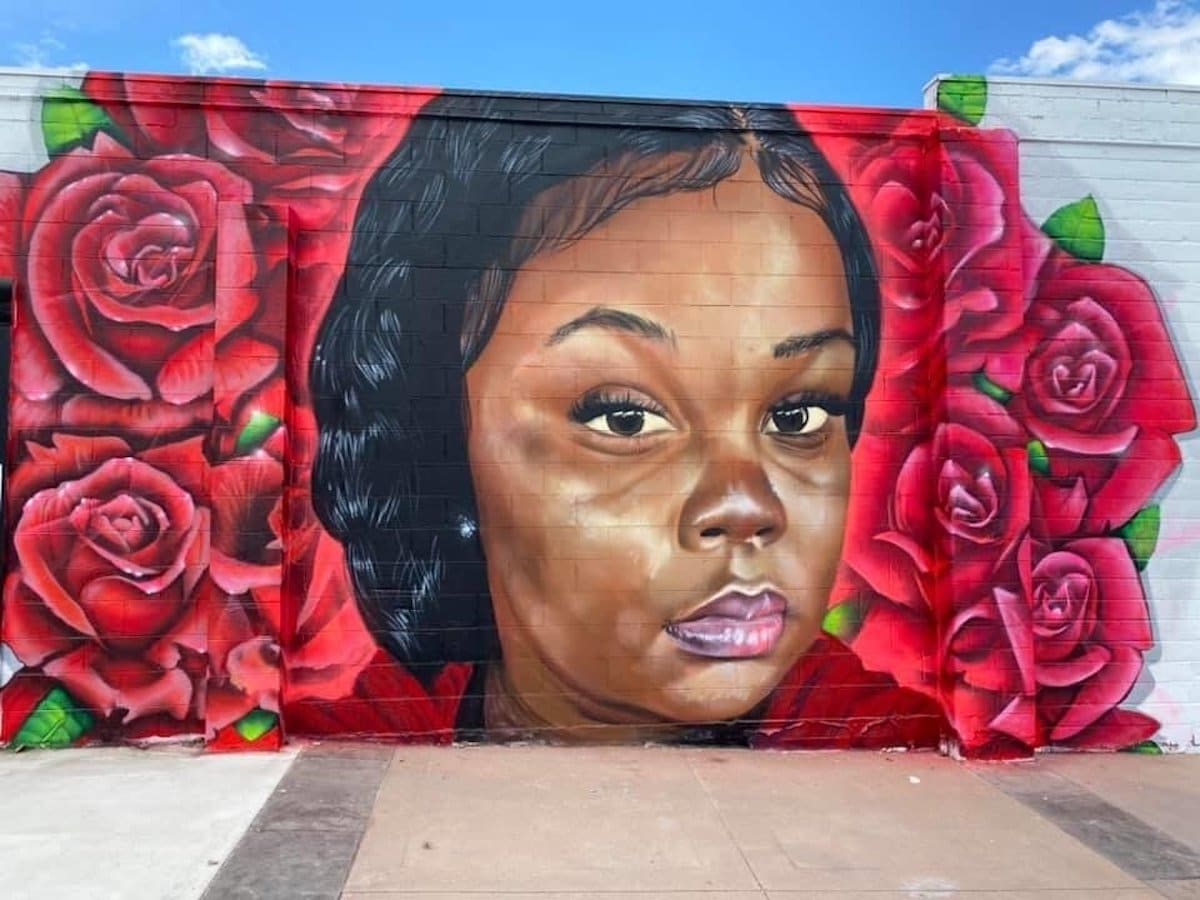
What sparked you to start creating your recent pieces about George Floyd, Breonna Taylor, and others who have passed away?
For the past month and a half, almost two months, I've been doing a ton of murals under the hashtag #spraytheirname.
It really started with the George Floyd mural that we did, then we went to Breonna Taylor, and a ton of other ones. Then I started doing friends that have passed away in Denver and then mothers came to me to do murals of their children that have passed away, some long ago, some recently, due to other sorts of violence.
Really I notice how important these street art pieces were when it came to honoring people and making sure that people remember someone's memory. For me, it was a healing tool and I saw how therapeutic it could be as well for a community. So I started getting into doing these murals and when John Lewis passed away I believe that it was an opportunity to do the same thing—creating a space where people could mourn and where people could really remember who he was.
One other thing, too, is that when I was doing individuals that people didn't know and putting them on street art spaces, people would ask me “who is that?” and it would be an opportunity for them to learn whether it was someone local that passed away due to domestic violence or someone in the public eye but maybe this individual wasn't really paying attention to the news. It became an opportunity to educate about an individual that not everyone knows.
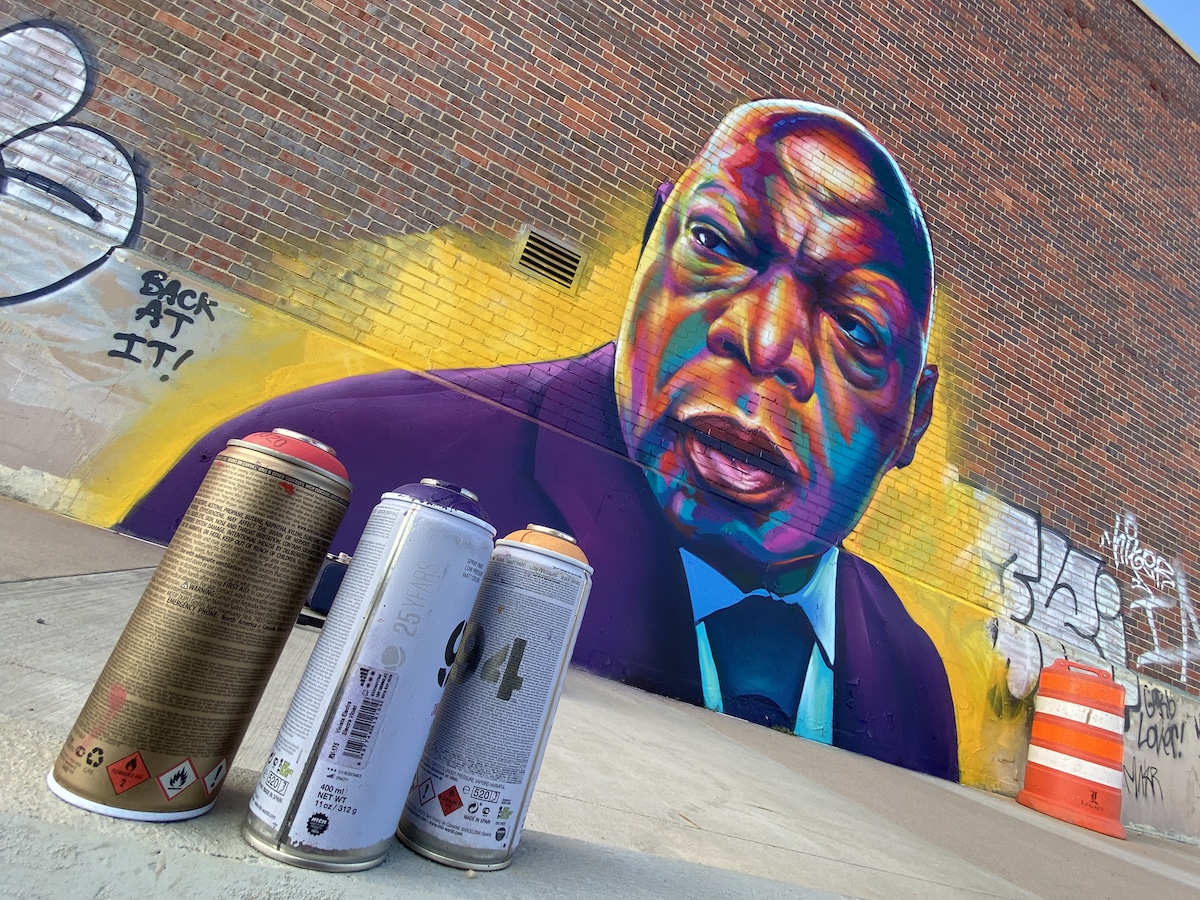
Specifically about your John Lewis mural, what inspired you to honor his memory, and what does he mean to you as an important leader?
Not everyone has the same background when it comes to knowledge or education or reading or absorbing history. It was an opportunity to teach as well and to share this opportunity for discovery. People in the neighborhood would discover who this individual was and, for me, John Lewis was a very important leader.
You talk about Martin Luther King. There were so many people around him that led the way as well. They too put themselves in harm's way and the fight for equal rights and equality. Just even seeing how young he was, gave me the inspiration to make sure that I do whatever I can to carry on that change as well.
For me, it's going to be through the arts. John Lewis, seeing him on the documentary, Good Trouble and then also seeing him a week ago on TV or the last time he went over the Selma Bridge, just seeing that contrast and when it comes to how much time has passed and then how much he's given to the world and our society, it definitely makes me appreciative of everything that I have. And it makes me want to make sure that the work that I do has meaning, that it's impactful, and that I leave a legacy, a lasting memory, when it comes to how, this artwork impacts people.
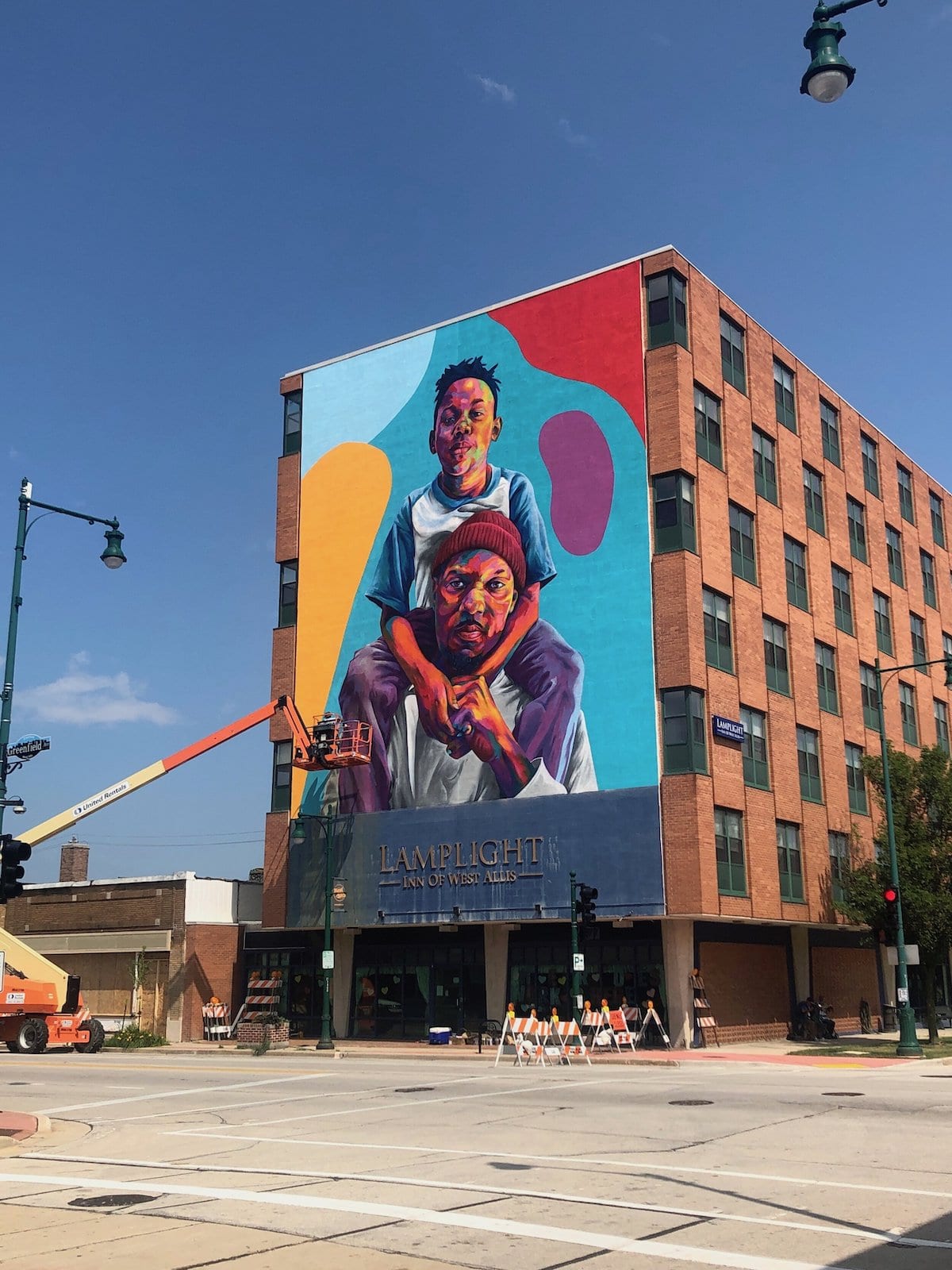
What do you hope that people take away from your recent murals?
I just want people to notice who these individuals are. I notice how important street art is because it's something that is in your face all the time. When you're getting up and going to work or you're coming home or you're getting lunch or you're on your jog or you're walking to the local park, you're seeing street art. You're seeing public art all the time, and this is a way for me to always showcase what's important in the community and what the community actually looks like as well.
I really just hope that people are becoming more educated about the subject matter, about who this individual was, and about what really matters because as things start to open up and we start to get a little bit more distracted, this will be a constant reminder for people of what's important, in life and what we're fighting for. Street art plays a huge role when it comes to sharing a message or communicating a message, idea, or concept and sharing what the community looks like.
I just want people to really investigate public art pieces a little bit more and start to learn who these people are.
